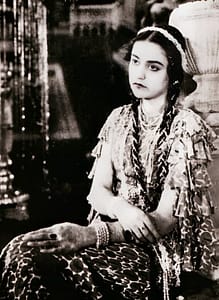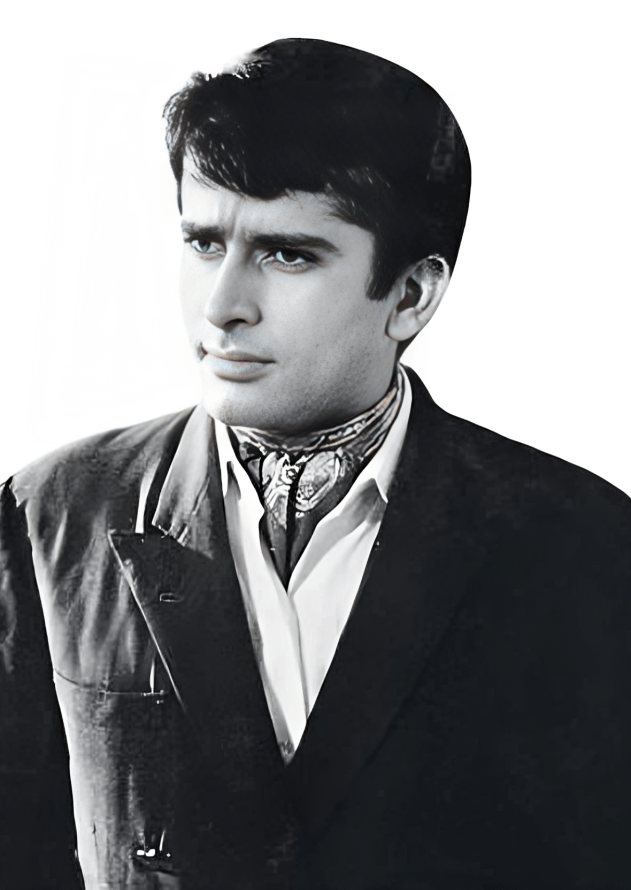Naseem Banu Bollywood Indian Actor Introduction.

Naseem Banu, known as the “Beauty Queen” of early Indian cinema, was one of the most iconic actresses of the pre-independence era. Born during the British Raj, she ruled the silver screen with her unparalleled beauty, sophisticated demeanor, and emotive performances. She was not only the first female superstar of Indian talkies but also a symbol of elegance, grace, and classic charm. Beyond her own successful career, Naseem Banu is remembered as the mother of the equally legendary Saira Banu and the mother-in-law of Bollywood’s “Tragedy King,” Dilip Kumar.
Early Life and Background
Naseem Banu was born as Roshan Ara Begum on July 4, 1916, in Delhi, British India, into an aristocratic Muslim family with a deep love for the arts and culture. Her father, Nawab Abdul Waheed Khan, was a civil servant, while her mother, Shamshad Begum (not to be confused with the playback singer), was a noted Urdu stage actress. Naseem inherited her mother’s artistic inclinations, and though acting was not considered respectable for women of noble lineage at the time, she was drawn to the world of cinema.
Raised in a traditional yet cultured environment, Naseem was given a refined upbringing. She was fluent in Urdu and Persian and trained in classical music and dance. Her mother initially discouraged her from pursuing acting, but Naseem’s beauty, talent, and passion made her destiny in films inevitable.
Entry into Films
Naseem Banu made her film debut in 1935 at the age of 19 in the movie “Khoon Ka Khoon,” an Urdu adaptation of Shakespeare’s Hamlet, directed by Sohrab Modi. She played Ophelia, while Sohrab Modi played Hamlet. Her performance was widely appreciated for its sophistication and tragic depth, setting the tone for her career in emotionally charged roles.
Her breakthrough came with the 1936 film “Pukar,” produced by Sohrab Modi under the Minerva Movietone banner. In this historical drama, she portrayed Empress Nur Jahan, a role that brought her immense fame. Her ethereal beauty and regal poise captivated audiences, earning her the title “Beauty Queen of Indian Cinema.”
Rise to Stardom
Throughout the late 1930s and 1940s, Naseem Banu became one of the top stars in the Indian film industry. Some of her most popular films during this period include:
- Pukar (1939)
Her performance as Empress Nur Jahan elevated her to superstardom. The film was a critical and commercial success, and Naseem’s dialogue delivery and grace left an indelible impression.
- Begum (1940)
In this film, she showcased her ability to portray complex female characters navigating love, power, and societal expectations.
- Ujala (1942)
Produced during the height of the Indian independence movement, Ujala reflected the socio-political sentiments of the time, and Naseem’s role was emblematic of resilience and hope.
- Chal Chal Re Naujawan (1944)
Directed by Gyan Mukherjee, this was a socially relevant film, where Naseem played a woman who transforms her circumstances with inner strength.
During this time, she was often compared to Hollywood stars like Greta Garbo for her poise and timeless beauty. Her image was that of an elegant, demure woman, and she carved a niche for herself as the “classic beauty” of Indian cinema.
Establishing Taj Mahal Pictures
In the late 1940s, Naseem Banu, along with her husband Ehsan-ul-Haq, established her own production company, Taj Mahal Pictures. This was a bold and pioneering step for a woman at the time, especially in an industry dominated by male producers and directors. Through this banner, she aimed to produce high-quality films and promote new talent.
One of the key films produced under this banner was “Ajeeb Ladki” (1949), which was a moderate success. Taj Mahal Pictures became instrumental in launching the film career of her daughter, Saira Banu, in the 1960s.
Personal Life
Naseem Banu’s personal life was as fascinating as her cinematic journey. She married Ehsan-ul-Haq, a successful film producer from Lahore. The couple had two children: a son named Sultan Ahmed, and a daughter, Saira Banu, who would go on to become one of Bollywood’s most loved heroines in the 1960s and 1970s.
Naseem was very protective and involved in her daughter’s career. When Saira expressed interest in joining films, Naseem not only supported her but also managed her early career. She was instrumental in grooming Saira Banu, managing her public image, choosing scripts, and ensuring she became a leading actress.
Later Years and Relationship with Dilip Kumar
One of the most significant chapters in Naseem Banu’s life was the marriage of her daughter Saira Banu to Dilip Kumar in 1966. Though there was a large age difference between the two stars, Naseem supported the union wholeheartedly. She had great respect for Dilip Kumar, and their family relationship was based on deep affection and cultural values.
In her later years, Naseem Banu lived a relatively quiet life, away from the limelight. She continued to be involved in charitable work and remained a revered figure in Bollywood circles. Her contributions as an actress and producer were acknowledged, though she never sought the attention that many stars of her generation craved.
Legacy and Impact
Naseem Banu holds a special place in the annals of Indian cinema for multiple reasons:
- First Beauty Queen of Indian Cinema
Her classic features, aristocratic background, and dignified screen presence earned her the nickname “Pari Chehra” (angel-faced). She was the epitome of grace, setting a standard for beauty that inspired generations.
- Pioneering Woman in Film Production
At a time when few women were in positions of power behind the camera, Naseem co-founded Taj Mahal Pictures and handled production responsibilities—breaking barriers for women in Indian cinema.
- Mother of a Superstar
Through her guidance, Saira Banu became one of Bollywood’s top heroines and starred opposite leading actors like Shammi Kapoor, Rajendra Kumar, and Dharmendra. Her marriage to Dilip Kumar added to the family’s star legacy.
- Timeless Filmography
Though many of her films were black-and-white and released before the independence era, they are remembered for their storytelling and her magnetic performances. She was one of the first actresses to bring depth to female characters in Indian films.
Death
Naseem Banu passed away on June 18, 2002, at the age of 85, in Mumbai. Her death marked the end of an era—a golden age of Indian cinema where grace, refinement, and understated performances were cherished. Her passing was mourned by the film industry, fans, and the artistic community who recognized her monumental contributions.
Conclusion
Naseem Banu’s life is a tapestry woven with elegance, talent, struggle, and legacy. As one of the earliest female superstars of Indian cinema, she blazed a trail for future generations of actresses. She was more than just a pretty face—she was a strong-willed woman who balanced family, career, and creativity with poise and strength.
Her influence is felt not just in the history of films but also in the legacy carried forward by her daughter Saira Banu and son-in-law Dilip Kumar. Together, they formed one of Bollywood’s most respected film dynasties. While modern cinema has evolved vastly since her time, the grace and legacy of Naseem Banu remain immortal—a reminder of the classic era when cinema was about stories, substance, and soul.



One thought on “Naseem Banu: The Beauty Queen of Indian Cinema.”